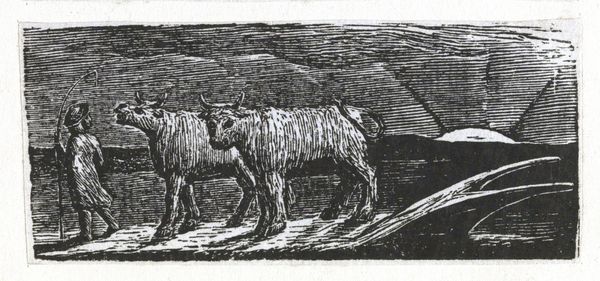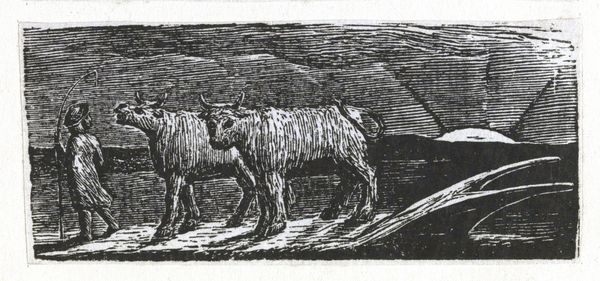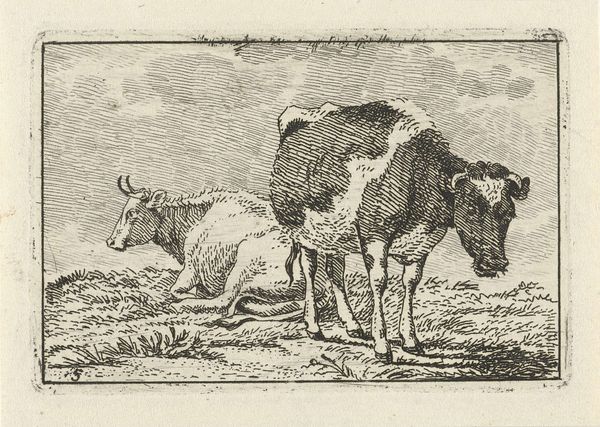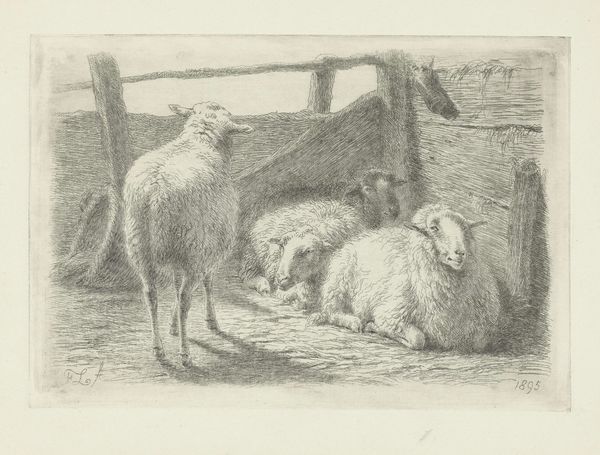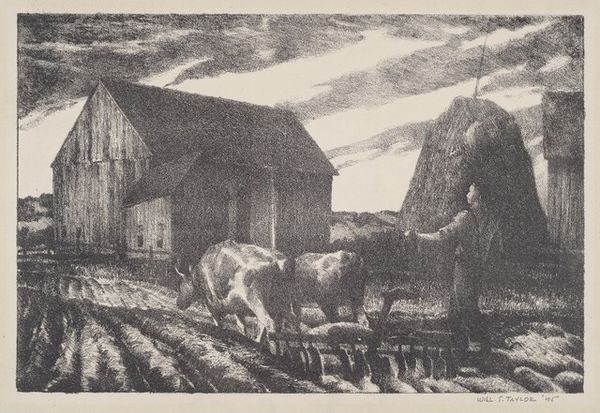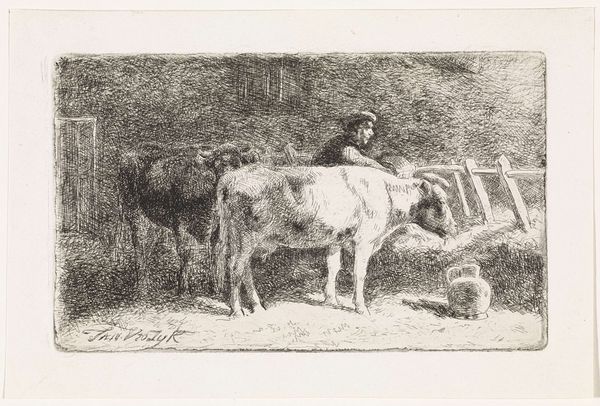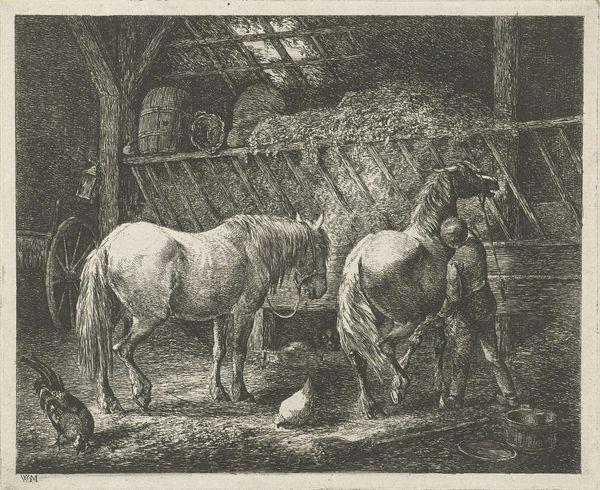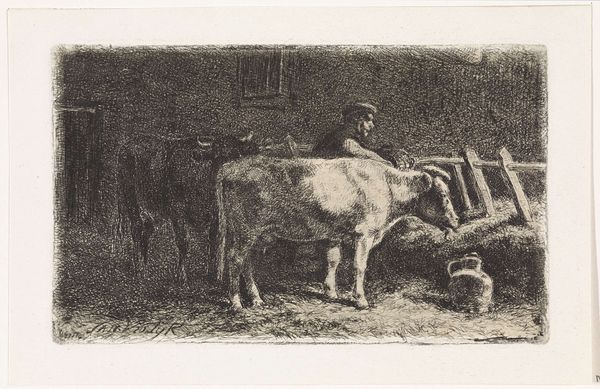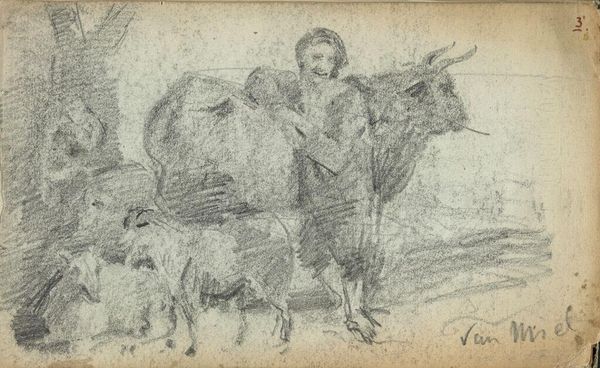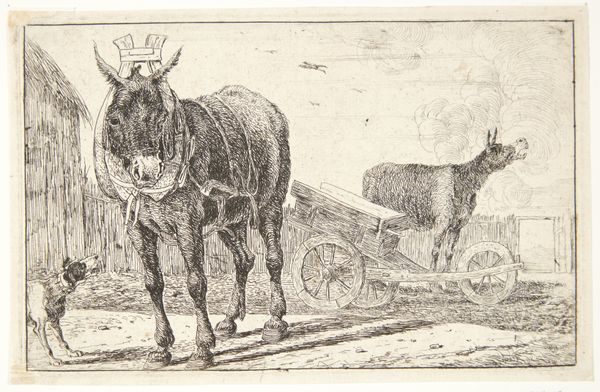
#
pencil drawn
#
amateur sketch
#
light pencil work
#
ink drawing
# print
#
pen sketch
#
pencil sketch
#
incomplete sketchy
#
pen-ink sketch
#
pen work
#
sketchbook drawing
Copyright: National Gallery of Art: CC0 1.0
Editor: So, this print is called "The Breadwinner," created between 1957 and 1961 by Anatoli Lvovich Kaplan. It depicts a horse and chickens, maybe in a barnyard. It feels quite humble, almost like a glimpse into a simple, perhaps impoverished, rural life. How do you interpret this work within its historical context? Curator: That's a keen observation. Kaplan was working in the Soviet Union during a period of intense artistic control. Socialist Realism was the dominant aesthetic, which favored idealized depictions of the proletariat and communist ideology. Given this, what do you notice about Kaplan's portrayal of rural life in "The Breadwinner"? Is it celebratory or critical? Editor: Well, it's definitely not idealized. The drawing style is quite raw, even a bit rough. The horse seems tired, and the whole scene feels grounded in everyday labor rather than propaganda. It almost feels like a critique. Curator: Exactly. Kaplan's work often subtly challenged the prescribed artistic norms. Consider the title "The Breadwinner." Who is the breadwinner here? Is it the horse, the animal power essential for agricultural labor? Or perhaps it hints at the often-unacknowledged burden carried by rural communities, providing food for the nation, yet living modestly themselves? How does this contrast with typical Soviet portrayals of agricultural abundance? Editor: I see your point. It seems like a quiet form of resistance, focusing on the reality of rural life instead of idealized propaganda. It makes me appreciate the work's honesty, knowing the pressures Kaplan must have faced. Curator: Precisely. And understanding that pressure enriches our understanding of its purpose. "The Breadwinner," becomes more than just an image; it becomes a social document, a subtle act of cultural defiance, adding greater nuance to the history of Soviet art. Editor: This gives me a new perspective; thinking about the socio-political climate truly shapes the way we interpret the artwork. Curator: Absolutely. It shows how artistic expression, even in its subtlest form, can offer insights into social conditions and political undercurrents.
Comments
No comments
Be the first to comment and join the conversation on the ultimate creative platform.
